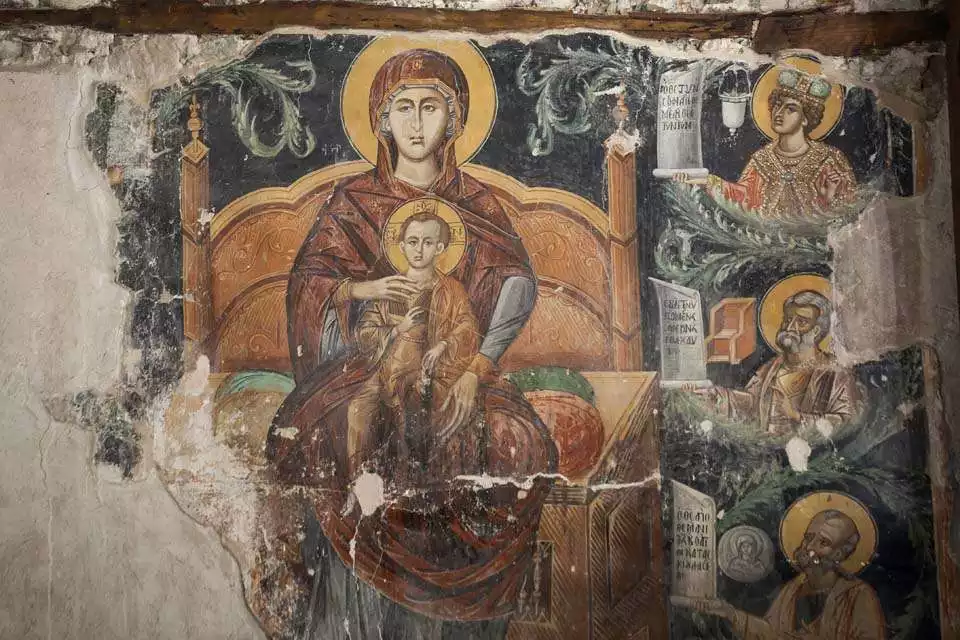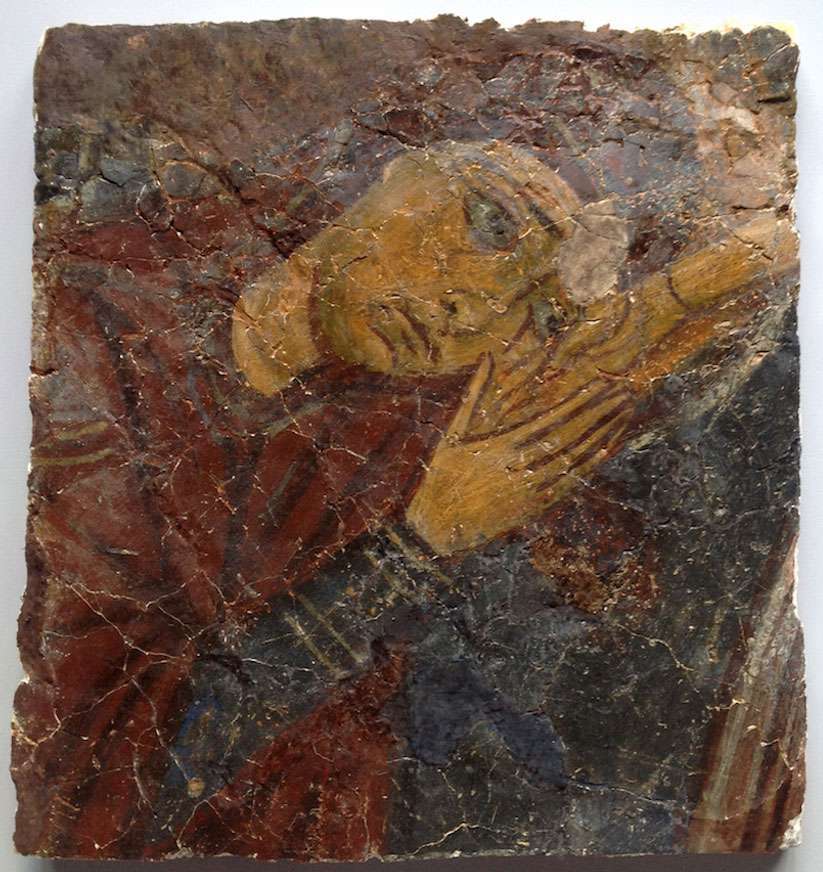
Mary, known also as Theotokos, Panagia, and Madonna, the Mother of Jesus, stands as a central figure in Christian theology, revered for her role in the birth and life of Jesus Christ. Her story, enveloped in devotion and respect, has resonated through centuries of Christian tradition. The exact dates of Mary’s birth and death remain a matter of theological and historical speculation, as early Christian texts provide limited details. Her life, predominantly known through biblical narratives and apocryphal texts, continues to be a subject of veneration and scholarly interest, inspiring countless works of art, music, and literature throughout history.
The Annunciation: A Divine Revelation
The story of Mary begins with the Annunciation, a momentous event where the Angel Gabriel announces to Mary that she will conceive and give birth to Jesus, the Son of God. This pivotal episode, chronicled in the Gospel of Luke, marks the beginning of Mary’s profound journey in Christian history. The Annunciation underscores her unwavering faith and obedience to God’s will, qualities that have endeared her to millions of believers. It represents not only the inception of Jesus’s earthly life but also Mary’s elevation as a model of virtue and faithfulness in Christian theology.
The Nativity: Birth of the Messiah
The Nativity, depicting the birth of Jesus, is a cornerstone in the narrative of Mary, Mother of Jesus. As told in the Gospels of Matthew and Luke, this event unveils Mary’s role as the mother of the Messiah. Amidst humble surroundings in Bethlehem, Mary gives birth to Jesus, an event celebrated worldwide at Christmas. This scene, immortalized in countless artworks, symbolizes hope and divine intervention in the human world. Mary’s presence at the Nativity not only signifies her role as a nurturing mother but also her integral part in the fulfillment of biblical prophecies. Her unwavering faith during this monumental event exemplifies her strength and devotion, traits that have inspired Christian communities for generations.
The Nativity’s impact extends beyond religious narratives, influencing art, culture, and theology. It highlights the humanity and divinity of Jesus, with Mary as the nurturing figure bridging these realms. Her portrayal in the Nativity scene has evolved through centuries, each artistic interpretation reflecting different cultural and theological perspectives. Yet, at its core, the Nativity remains a testament to Mary’s profound influence in the Christian faith, portraying her as a figure of compassion, strength, and divine grace.

The Mother of Sorrows: A Journey of Faith
Mary’s journey continues with her title as the Mother of Sorrows, a poignant aspect of her legacy in Christian tradition. This chapter of her life encompasses her experiences of pain and suffering, particularly during the Passion and Crucifixion of Jesus. The portrayal of Mary at the foot of the Cross, as depicted in John’s Gospel, highlights her immense sorrow yet unwavering faith. This image of Mary, engulfed in grief yet steadfast in belief, has become a powerful symbol of maternal love and sacrifice in Christian iconography.
The concept of the Mater Dolorosa, or the Sorrowful Mother, underscores the depth of Mary’s emotional and spiritual journey. Her sorrow reflects the human aspect of the Christian narrative, resonating deeply with believers who have experienced personal loss and suffering. Through her trials, Mary embodies resilience and faith, offering a source of comfort and inspiration to those enduring hardship. Her role in this part of Jesus’s life is not only a testament to her strength as a mother but also an enduring reminder of the sacrifices inherent in unconditional love and faith.
The Assumption: A Transition to Glory
The Assumption of Mary, Mother of Jesus, marks a significant transition in her story, transcending her earthly existence. According to Christian belief, particularly in Catholic and Orthodox traditions, Mary was assumed body and soul into heavenly glory at the end of her earthly life. This event, not explicitly detailed in the Bible but rooted in early Christian tradition, symbolizes the culmination of Mary’s earthly journey and her elevation to a state of eternal grace. The Assumption, celebrated as a major feast day in many Christian denominations, reflects the profound respect and veneration afforded to Mary. It acknowledges her unique role in salvation history and her continuous intercession for humanity from heaven.
Artistically and theologically, the Assumption has been a subject of inspiration, leading to a myriad of interpretations in art, literature, and religious thought. These interpretations often portray Mary ascending gracefully, surrounded by angels, emphasizing her purity and holiness. This event encapsulates the Christian belief in the resurrection of the body and eternal life, with Mary as a preeminent example of this divine promise. Her Assumption into heaven remains a powerful symbol of hope and faith, reinforcing her status as a beloved and revered figure in Christian doctrine.

The Veneration of Mary: Impact and Influence
The veneration of Mary, Mother of Jesus, extends far beyond her biblical narrative, deeply influencing Christian worship, theology, and culture. Over the centuries, Mary has been revered in various forms and titles, such as the Blessed Virgin, Theotokos, Panagia, Our Lady, and the Queen of Heaven. This veneration is evident in the numerous Marian devotions, including prayers, feasts, and the Rosary, a central practice in Catholic spirituality. Mary’s influence permeates Christian art, music, and literature, where she is often depicted as a figure of compassion, grace, and maternal tenderness.
Mary’s role as an intercessor and a model of virtue has made her an enduring figure in Christian piety. Her life and virtues are seen as exemplars of faith, obedience, and humility, qualities that believers aspire to emulate. The veneration of Mary also plays a significant role in ecumenical dialogues, as different Christian denominations explore their shared reverence for her while acknowledging doctrinal differences. Her universal appeal and enduring presence in Christian tradition underscore her significance not just as the mother of Jesus, but as a symbol of enduring faith and divine grace throughout the ages.
Marian Apparitions: Messages of Hope and Peace
The phenomenon of Marian apparitions forms a fascinating chapter in the veneration of Mary, Mother of Jesus. Throughout history, numerous reports of Mary appearing to individuals across different cultures and locations have captivated the faithful. These apparitions, often conveying messages of hope, peace, and calls for repentance, have played a significant role in shaping Marian devotion. Notable examples include Our Lady of Guadalupe in Mexico, Our Lady of Lourdes in France, and Our Lady of Fátima in Portugal. Each apparition carries unique cultural and theological significance, often leading to the establishment of major pilgrimage sites and a deepening of faith among believers.
These apparitions are not just religious phenomena but also social and cultural catalysts. They have influenced art, inspired movements for social justice, and fostered a sense of community among devotees. The messages conveyed through these apparitions reinforce themes central to Christian belief: compassion, reconciliation, and the transformative power of faith. Marian apparitions continue to be a source of inspiration and spiritual enrichment for many, reflecting the enduring influence of Mary in the Christian tradition.
Mary, Mother of Jesus, emerges through these chapters as a figure of profound spiritual significance. From the Annunciation to her Assumption and beyond, her life embodies themes of faith, obedience, sorrow, and grace. The veneration of Mary and the impact of Marian apparitions highlight her enduring legacy in Christian worship and culture. As a beloved figure in Christianity, her story continues to inspire devotion and reverence, offering a timeless example of faith and resilience.
References
- Ancient Origins. “Virgin? The Secret and Controversial Account of Mary, Mother of Jesus.” Ancient Origins. Accessed December 26, 2023.
- Brown, Raymond E. “The Birth of the Messiah: A Commentary on the Infancy Narratives in Matthew and Luke.” Doubleday, 1993.
- Encyclopedia Britannica. “Mary | Mother of Jesus.” Britannica.com. Accessed December 26, 2023.
- Johnson, Maxwell E. “The Virgin of Guadalupe: Theological Reflections of an Anglo-Lutheran Liturgist.” Rowman & Littlefield, 2002.
- Pelikan, Jaroslav. “Mary Through the Centuries: Her Place in the History of Culture.” Yale University Press, 1996.
- Reviews in History. “Review of Mary in Western Art.” Reviews in History. Accessed December 26, 2023.

